Overview
This article delves into effective strategies to enhance direct-to-consumer (DTC) wine sales, underscoring the necessity of customized approaches for family-owned vineyards. It presents essential methods such as:
- Optimizing wine club memberships
- Leveraging e-commerce solutions
- Navigating compliance
These strategies, when implemented collectively, significantly boost customer engagement and foster sustainable growth in an increasingly competitive market. By focusing on tailored tactics, vineyards can effectively navigate the complexities of DTC sales, ensuring they meet the evolving demands of their clientele.
Introduction
In an industry where personal connections and unique experiences drive consumer loyalty, direct-to-consumer (DTC) wine sales have emerged as a vital lifeline for vineyards. Family-owned wineries are navigating the complexities of e-commerce and shifting consumer preferences, confronting both opportunities and challenges that could define their future. This article delves into ten strategic approaches designed to empower vineyards to enhance their DTC sales, cultivate lasting customer relationships, and thrive in an increasingly competitive market. How might these strategies reshape the landscape of wine sales and ensure sustainable growth for producers?
Enocap: Transform DTC Sales with Strategic Advisory Services
Enocap is at the forefront of revolutionizing the beverage industry with specialized advisory services designed to unlock direct-to-consumer (DTC) revenue. Their comprehensive approach includes:
- Developing robust sales channels
- Optimizing wine club memberships
- Implementing effective demand generation techniques
By leveraging data-driven insights, Enocap empowers family-owned vineyards to build meaningful connections with consumers, promoting sustainable growth in an increasingly competitive landscape.
Industry leaders acknowledge the vital role of DTC strategies. Bourcard Nesin, an analyst at Rabobank, notes that smaller and mid-sized vineyards heavily rely on DTC sales as a critical revenue source. However, many encounter difficulties in expanding their e-commerce reach. This scenario underscores the need for that guide businesses through the complexities of the market.
Enocap's data-centric strategy not only enhances immediate sales but also cultivates long-term customer loyalty, positioning businesses for enduring success. By focusing on strategic planning and market intelligence, Enocap addresses the unique challenges faced by family-owned vineyards, ensuring they remain competitive and thrive in a dynamic industry.
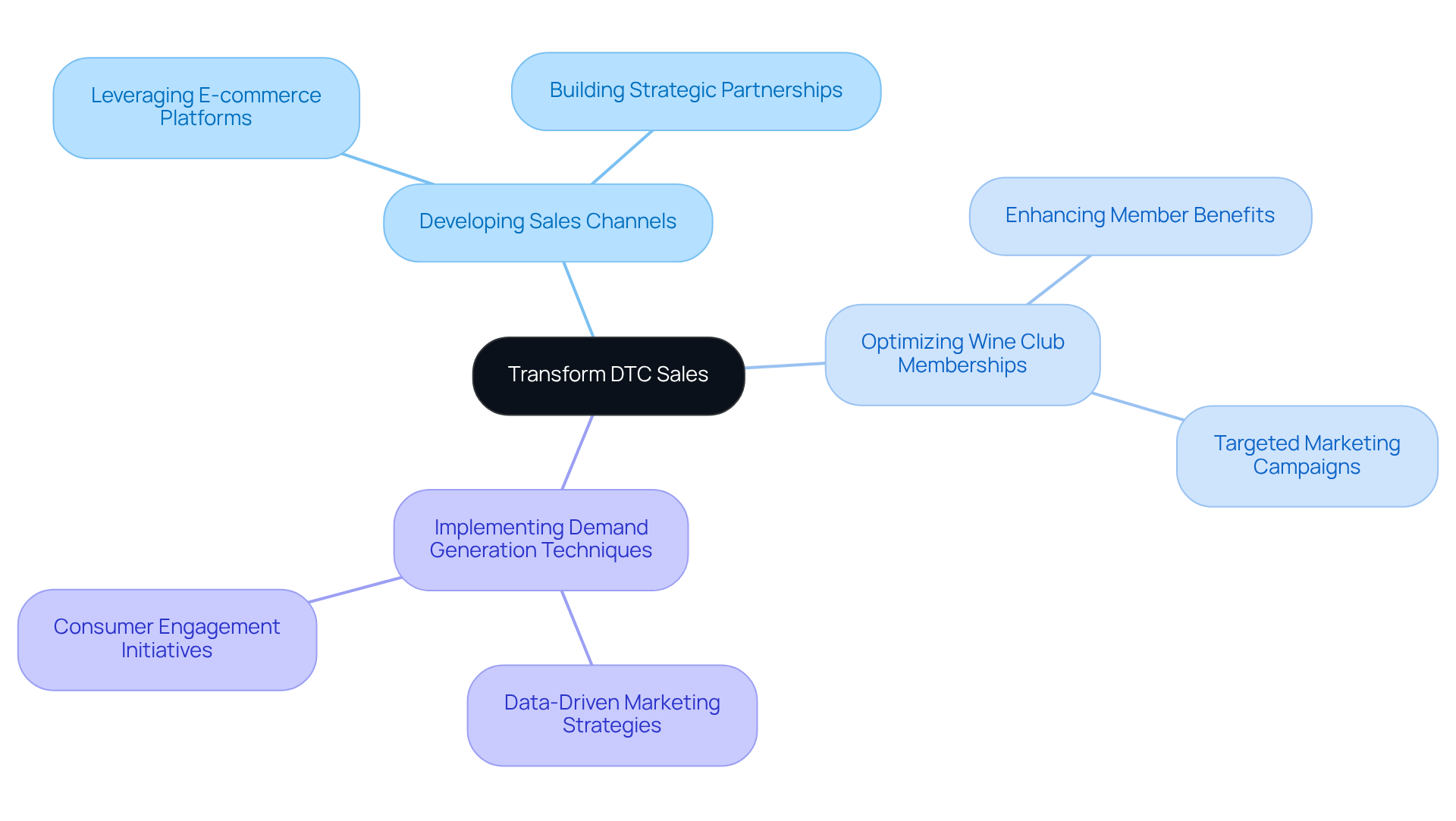
Shopify: Leverage E-Commerce Solutions for DTC Success
Leveraging Shopify as an e-commerce solution empowers vineyards to craft a seamless online shopping experience for consumers. With customizable templates and , businesses within the wine industry can significantly enhance their online presence and drive sales.
By engaging Enocap's strategic capital advisory services, which encompass tailored debt, equity, and acquisition solutions, vineyards can unlock substantial growth opportunities. This strategic combination not only aids in building sustainable channels for direct to consumer wine but also transforms casual buyers into loyal club members.
Furthermore, Shopify's analytics tools enable vineyards to monitor customer behavior effectively, allowing them to refine their marketing strategies for direct to consumer wine, ensuring predictable revenue and fostering long-term customer loyalty.
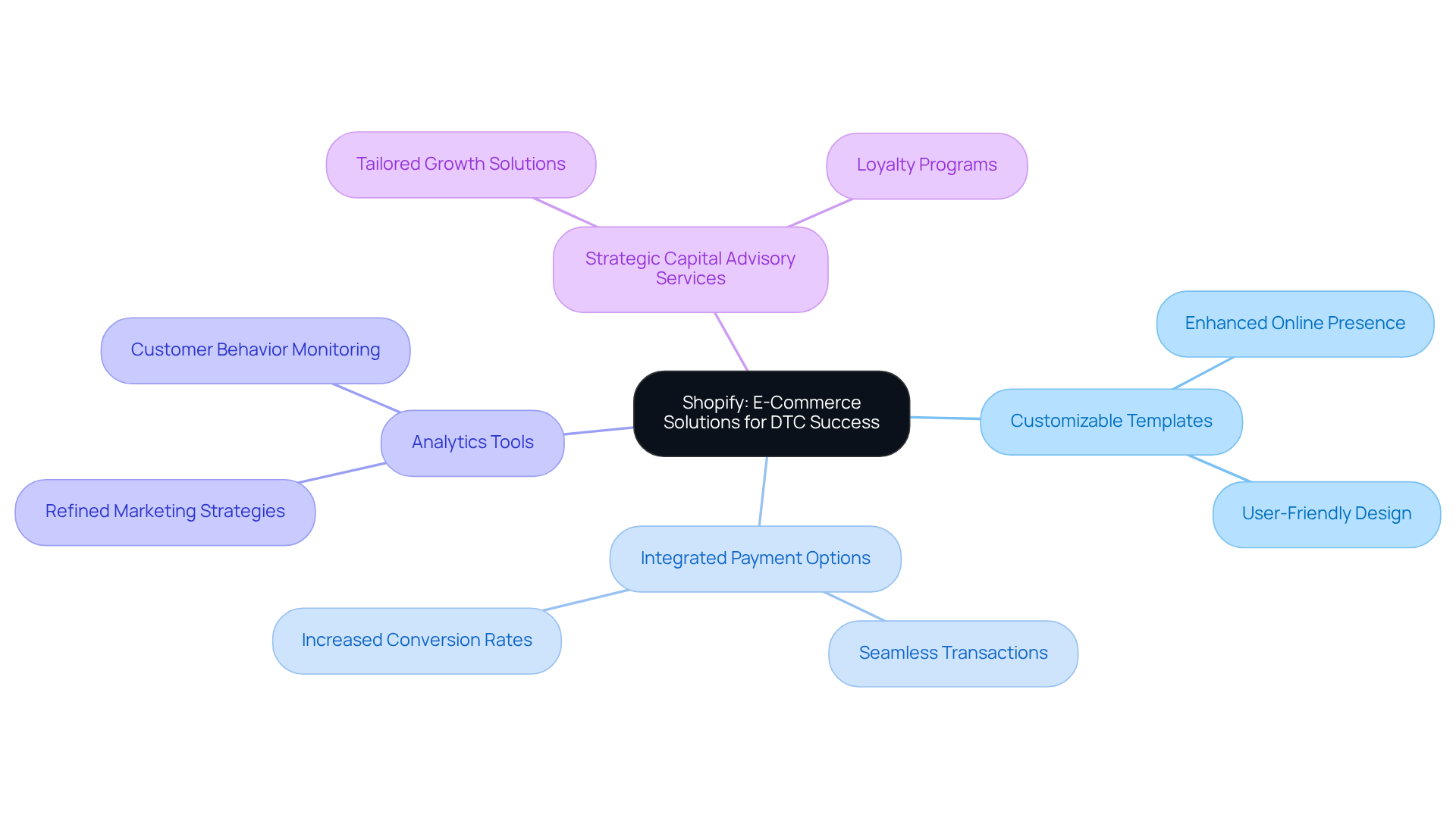
Sovos: Navigate Compliance and Logistics for DTC Wine Sales
Sovos plays a pivotal role in helping producers navigate the complex landscape of compliance and logistics in direct to consumer wine sales. By ensuring adherence to both state and federal regulations, Sovos empowers vineyards to evade costly penalties and streamline their shipping processes. This emphasis on compliance not only mitigates risks but also allows establishments to focus on driving sales growth. As the DTC wine market continues to evolve, the demand for efficient logistics solutions becomes increasingly critical. With the average price per bottle shipped now at $52.68, producers must refine their operations to sustain profitability while fulfilling consumer expectations for timely delivery.
Current trends reveal a notable shift towards e-commerce, with vineyards progressively embracing online sales models to connect with customers directly. This transition demands robust logistics strategies that prioritize and secure storage, ensuring the quality of wine during transit. Industry experts highlight that the integration of advanced technologies, such as IoT-enabled tracking systems, is transforming logistics operations, enhancing efficiency and transparency throughout the supply chain.
Moreover, Sovos' comprehensive compliance solutions are indispensable for vineyards aiming to broaden their DTC sales channels. By leveraging these tools, vineyards can adeptly manage the intricacies of cross-border shipments and diverse regulations, ultimately enhancing their market reach and customer satisfaction. In a competitive landscape where the demand for premium wines continues to surge, the capacity to navigate logistics effectively is essential for sustained growth and success.
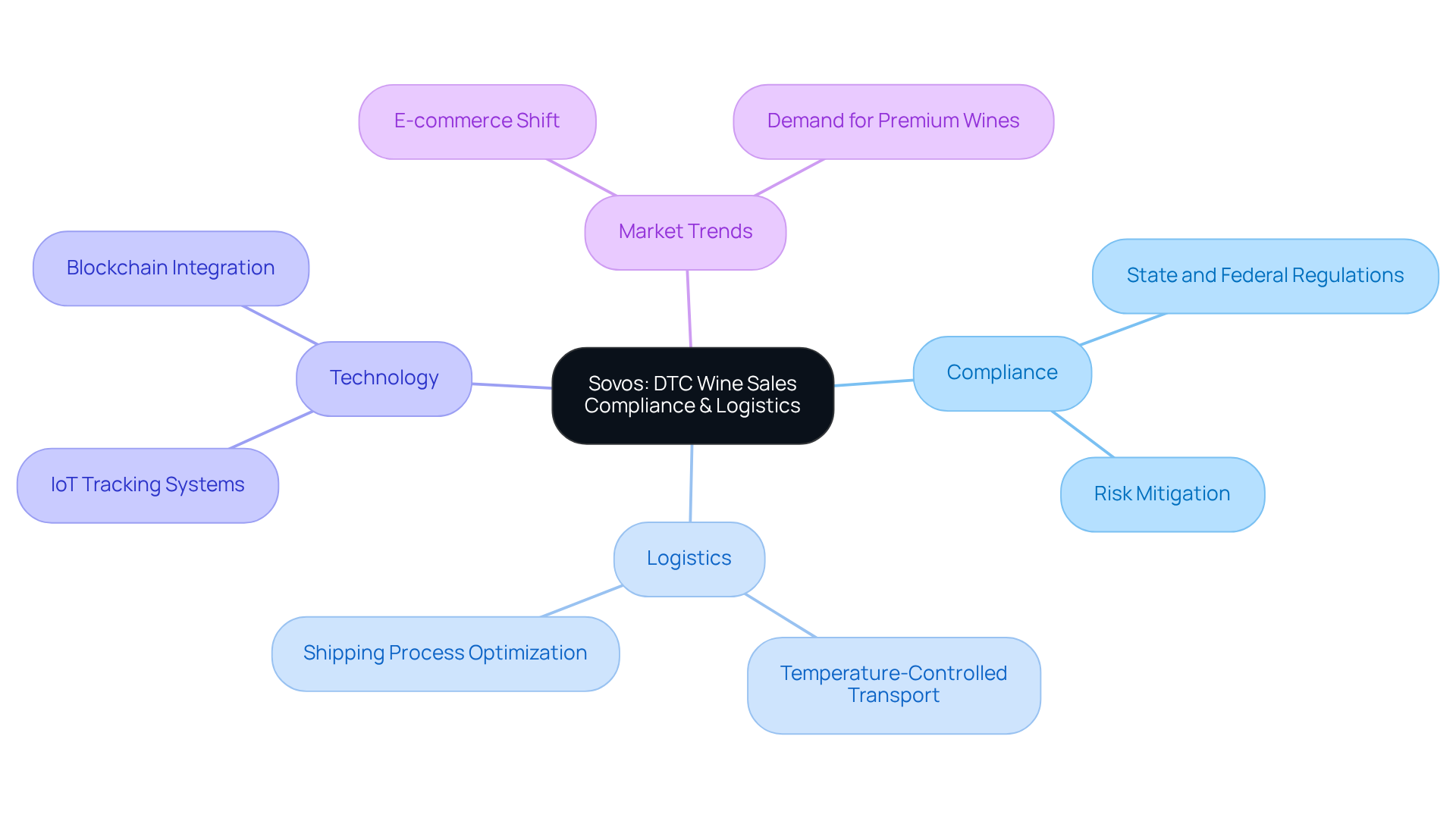
SVB: Utilize Market Insights to Drive DTC Sales Growth
Harnessing market insights is crucial for vineyards aiming to elevate their direct to consumer wine sales. By analyzing buying habits and market dynamics, vineyards can identify emerging trends and customer preferences, allowing them to tailor their marketing strategies and product offerings accordingly. Notably, recent data indicates that 72% of volume losses in the wine industry stem from consumers gravitating toward super premium and sparkling wines. This trend underscores the imperative for wineries to in response to shifting public preferences.
Moreover, effective strategies for identifying market trends involve utilizing predictive audience models that evaluate a myriad of data signals. Evidence shows that individuals exposed to both rich media and display advertisements convert at rates significantly higher than those exposed to a single format, with increases of 132.47% and 154.51%, respectively. This highlights the importance of a comprehensive marketing strategy that engages consumers across various channels.
As the beverage sector faces unprecedented changes in consumer demographics and attitudes, particularly among younger buyers, it becomes essential for producers to devise targeted marketing strategies. Engaging the 30 to 45 age group, which has shown a growing interest in beverages, can help mitigate declines linked to the aging Boomer demographic. By focusing on occasion-based marketing and providing educational resources, vineyards can more effectively connect with new wine consumers who often find the market challenging to navigate.
In conclusion, leveraging market insights not only enables producers to align their strategies with consumer demands but also fosters sustainable growth in DTC sales. By staying attuned to emerging trends and refining their marketing strategies, vineyards can enhance their market presence and cultivate enduring customer loyalty.
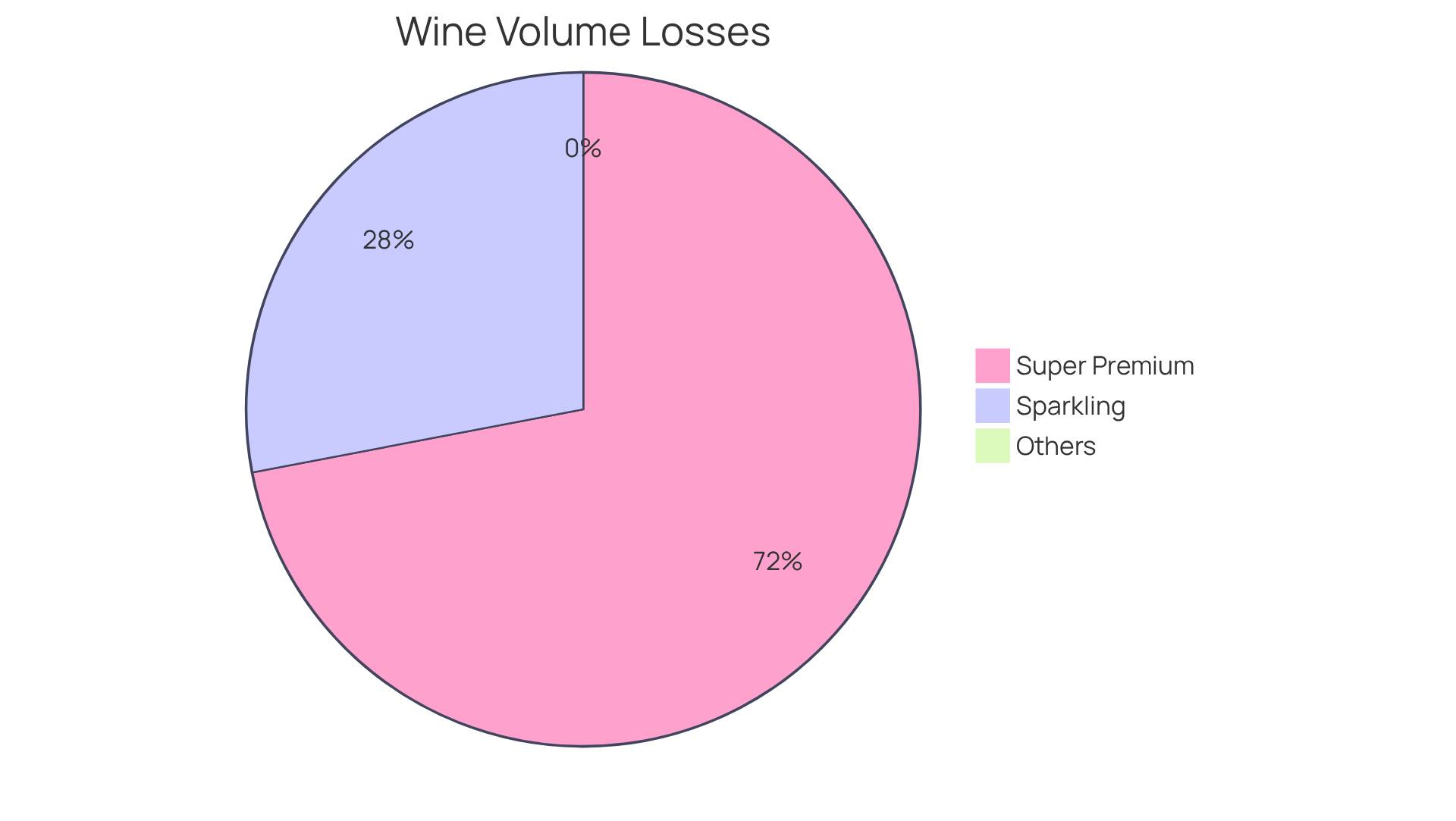
Wine Business: Access Resources for DTC Wine Strategies
Wine Business offers a comprehensive selection of resources designed specifically to empower producers in developing and refining their direct to consumer wine strategies. With insightful articles, engaging webinars, and detailed case studies, these resources enable wine producers to stay informed about industry best practices and , ultimately enhancing their marketing efforts and boosting overall sales performance.
Notably, case studies highlight effective DTC marketing strategies employed by leading vineyards, providing practical insights that can be tailored to fit unique business models. Additionally, webinars featuring industry experts deliver valuable insights into current trends and effective strategies, equipping producers to navigate the complexities of the DTC landscape with confidence.
Enocap plays a pivotal role in this transformation, unlocking direct-to-consumer revenue and crafting compelling brand stories that resonate with consumers. Furthermore, strategic capital planning is essential for family-owned vineyards to secure the right funding for growth and sustainability.
As Dr. Liz Thach, a professor at Sonoma State University’s Wine Business Institute, articulates, "Digital marketing can be defined as 'any form of online interaction for the purpose of creating demand for products and services.'" This underscores the critical role of digital strategies in enhancing DTC efforts, particularly for family-owned vineyards pursuing sustainable growth.
To maximize DTC sales, producers should seriously consider implementing targeted marketing campaigns, leveraging social media platforms, and cultivating strong relationships with their customer base.
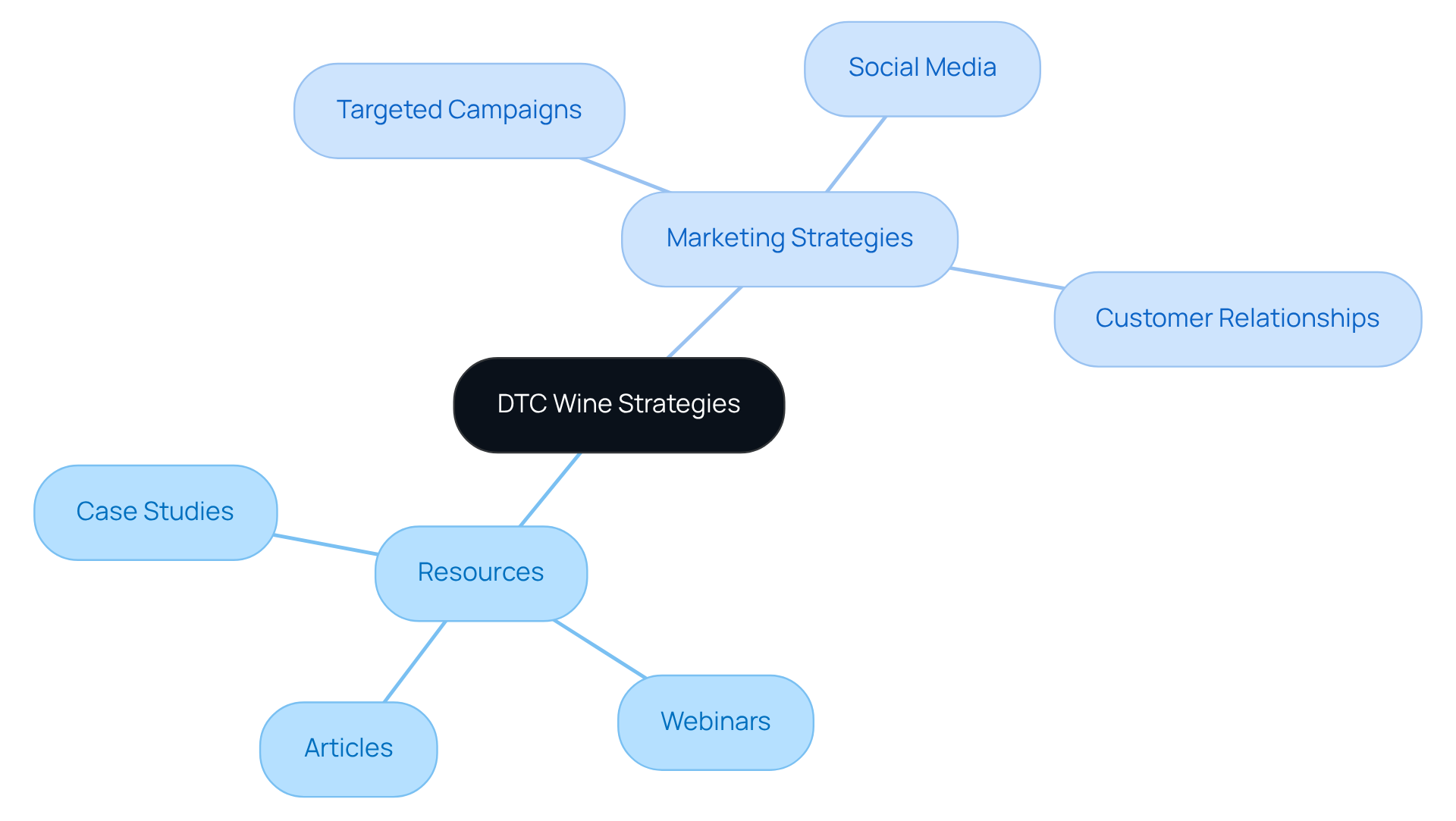
The Brand Leader: Implement Innovative Marketing to Attract Young Consumers
Creative marketing strategies are crucial for vineyards aiming to attract younger consumers. By leveraging social media platforms, wineries can craft engaging narratives that resonate with this demographic, transforming casual buyers into loyal club members through proven methods such as targeted promotions and personalized communication. Influencer partnerships are pivotal, as they foster trust and authenticity, rendering wine more relatable. Research indicates that 74% of individuals turn to social media for suggestions, with 44% of Gen Z shoppers making purchases after viewing influencer endorsements.
Wineries must also embrace , enabling them to connect with younger audiences through memorable events and activities. For instance, Silver Trident Winery's Puppy Pairings and the Potato Chip Extravaganza provide distinctive experiences that enhance brand visibility and cultivate stronger connections with customers, aligning with the goal of establishing sustainable direct-to-customer channels. Industry experts emphasize that the wine marketing landscape must transition from traditional high-end messaging to more inviting and relatable content that mirrors real-life scenarios, such as casual gatherings and social outings.
Sustainability in packaging emerges as another key selling point for younger buyers, who prioritize minimal waste and recyclable options. Successful social media campaigns have showcased the effectiveness of tailored content strategies across various platforms. For example, YouTube serves as a medium for storytelling, while TikTok presents opportunities for playful engagement. By understanding the preferences and behaviors of younger buyers, vineyards can devise marketing strategies that enhance direct-to-customer sales and foster enduring brand loyalty. Moreover, strategic capital planning can support these initiatives, ensuring that establishments possess the necessary resources to lower the barrier to entry for tastings and attract younger individuals who may be hesitant to explore beverages.
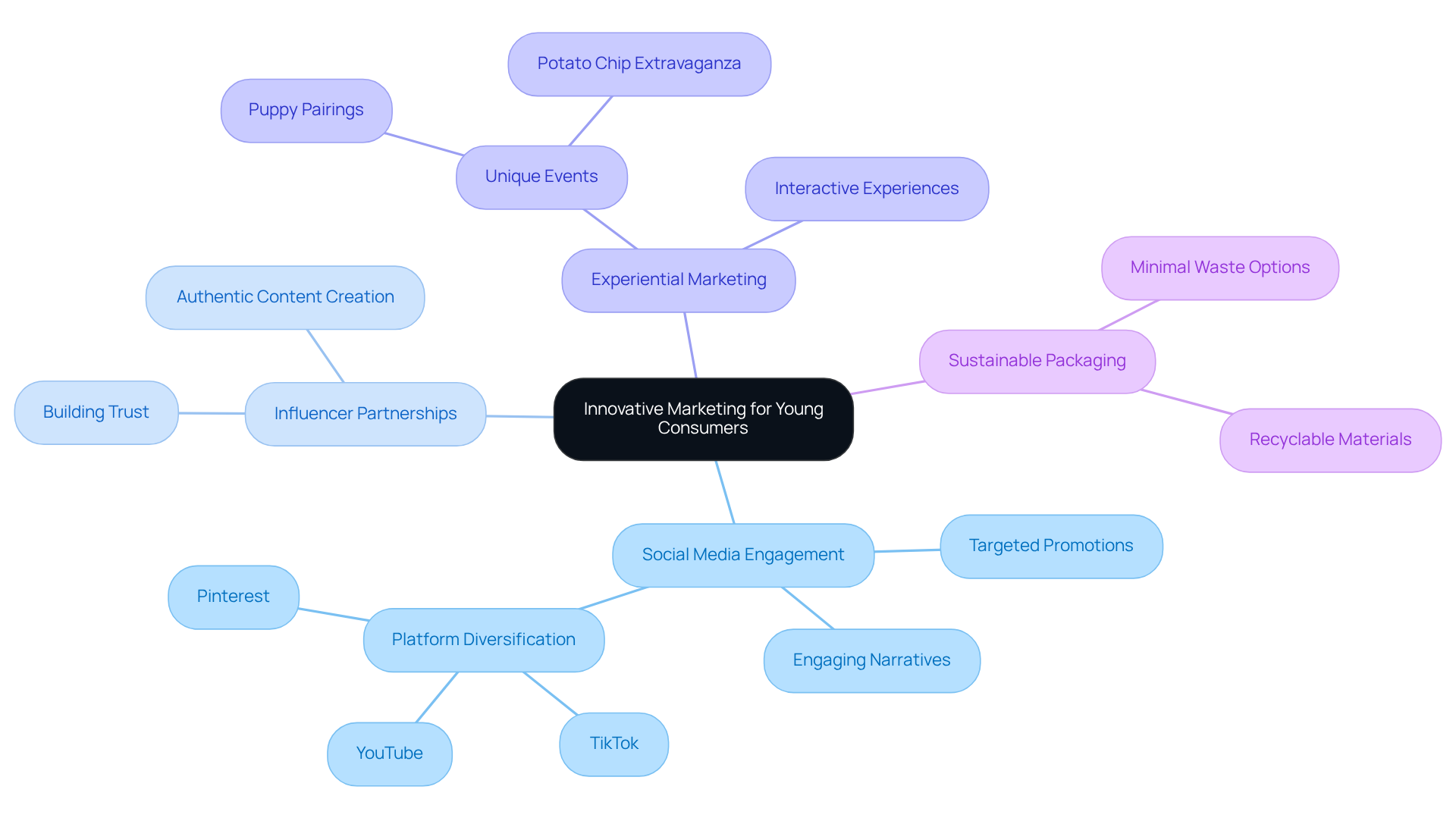
Deloitte Digital: Adapt to Evolving Consumer Preferences in DTC Wine
Deloitte Digital underscores the imperative for vineyards to recalibrate their strategies for direct to consumer wine in response to evolving consumer preferences. With the surge in online beverage shopping—accelerated notably by the pandemic—producers must capitalize on this trend to bolster engagement and drive sales. E-commerce growth in the wine sector has been extraordinary, as evidenced by the increase in online wine buyers from 1.5 million to 4.1 million. This shift underscores the necessity for vineyards to to meet the demands of a more health-conscious and experience-driven clientele.
Successful vineyards are already adapting to these market dynamics by adopting innovative strategies. For instance, the rise of non-alcoholic beverages, projected to reach nearly $2.3 billion in sales in 2023, reflects a growing preference among consumers for lower-alcohol options. Additionally, the trend of pairing wines with diverse cuisines, including spicy dishes and plant-based meals, indicates a transformation in consumer habits that vineyards can leverage by broadening their offerings.
Insights from Deloitte Digital reveal that understanding these shifting trends is vital for vineyards aiming to attract new market segments. By focusing on storytelling and personalized experiences, vineyards can cultivate stronger connections with customers, fostering loyalty and enhancing brand value. As the wine industry continues to evolve, those who adapt their DTC strategies to align with consumer preferences will be optimally positioned for sustainable growth.
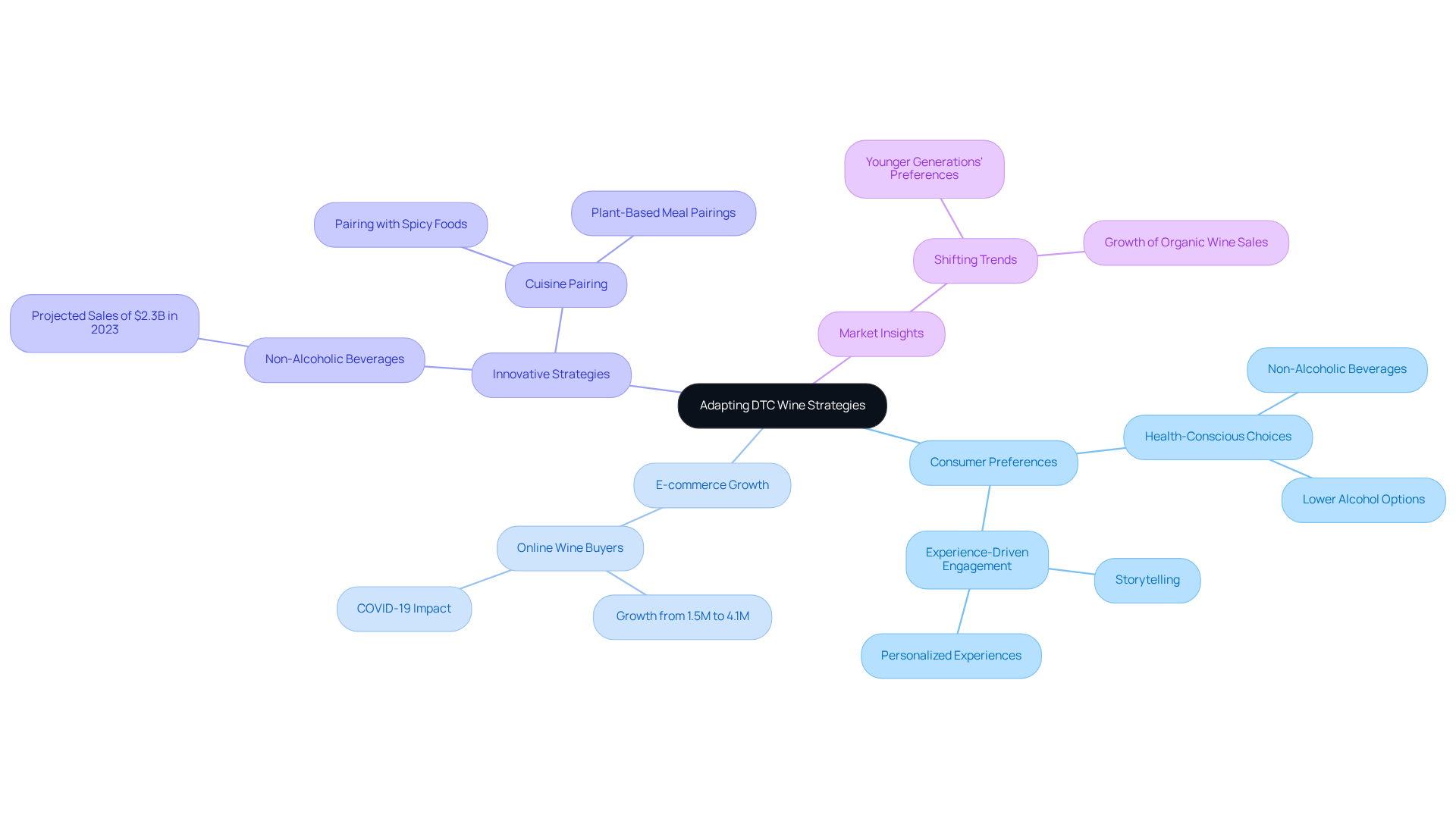
SevenFifty: Build Direct Relationships to Enhance DTC Sales
SevenFifty equips vineyards with essential tools and platforms to forge direct connections with their customers. Engaging customers through personalized communication and targeted marketing efforts not only fosters loyalty but also encourages repeat purchases. This direct engagement is pivotal for enhancing direct to consumer wine sales.
Furthermore, by implementing transformative DTC strategies, vineyards can craft compelling brand narratives that resonate with their audience, effectively converting casual buyers into dedicated club members.
Strategic capital planning plays a crucial role here, enabling family-owned vineyards to explore opportunities in debt, equity, or acquisitions. This proactive approach ensures and long-term success in the competitive wine sector.
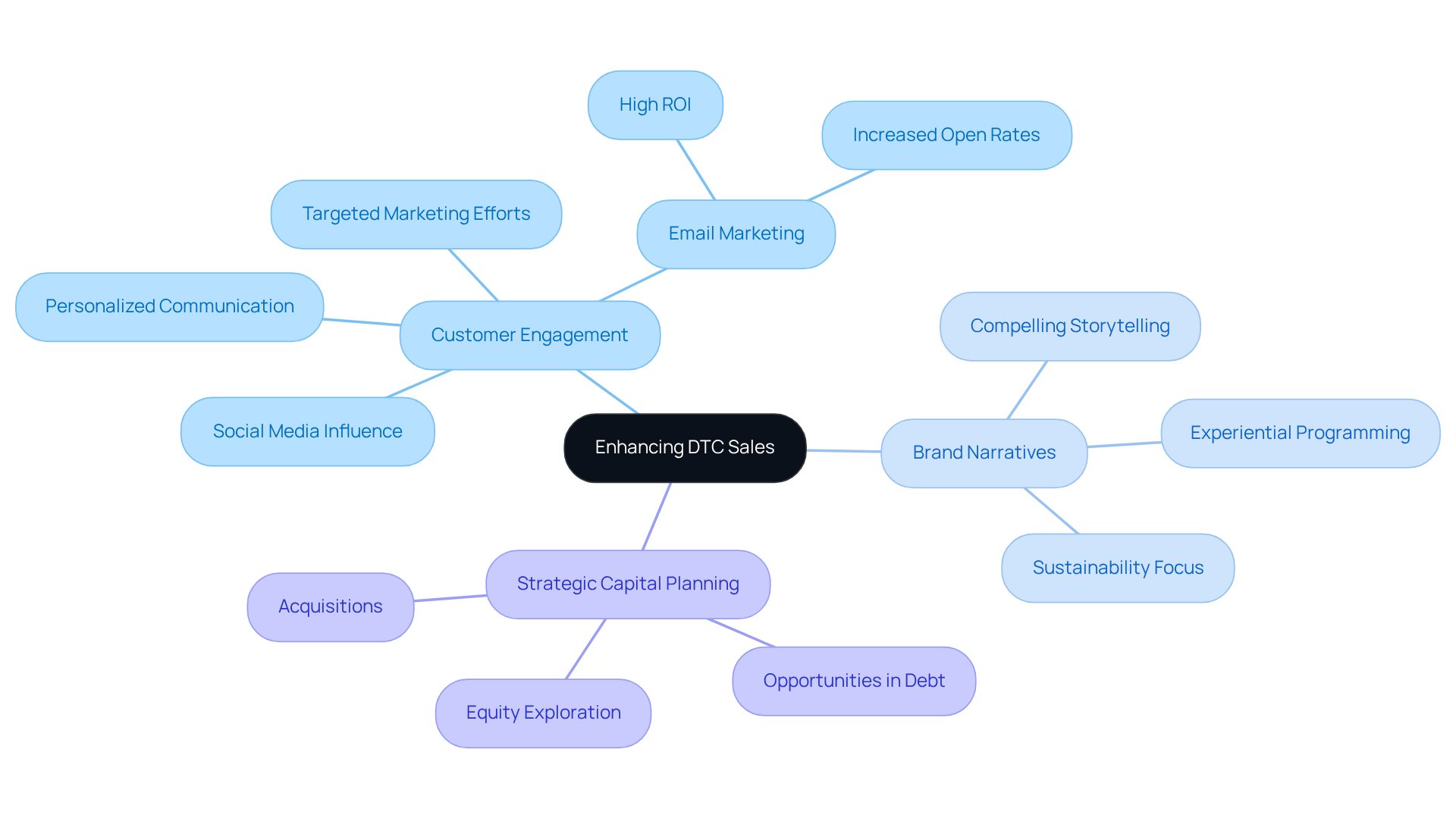
Wine Institute: Understand Compliance and Shipping Laws for DTC Success
The Wine Institute serves as an essential resource for vineyards navigating the complexities of compliance and shipping regulations vital for successful direct to consumer wine sales. As the legal landscape evolves, it is imperative for wine producers to familiarize themselves with state-specific regulations to avert potential legal pitfalls. Notably, Mississippi has recently become the 48th state to permit some form of DTC shipping of beverages, allowing both in-state and out-of-state producers to apply for permits. This development presents new revenue opportunities, particularly for small and mid-sized producers.
Wineries must ensure they obtain the necessary licenses to ship beverages directly to consumers, as many states restrict shipments to licensed entities. Compliance extends beyond merely securing licenses; it encompasses adherence to age verification processes and household volume limits, both critical for maintaining legal operations. For example, Arkansas now permits residents to purchase beverages online and join clubs from authorized producers, yet limitations persist, including a cap of 24 cases per household annually.
The Wine Institute underscores the significance of comprehending these legal requirements, as they can profoundly influence sales strategies. Wineries with can leverage these insights to bolster their market presence while ensuring compliance with evolving regulations. By remaining informed about shipping laws and actively participating in advocacy efforts, wineries can position themselves more effectively for success in the competitive DTC landscape.
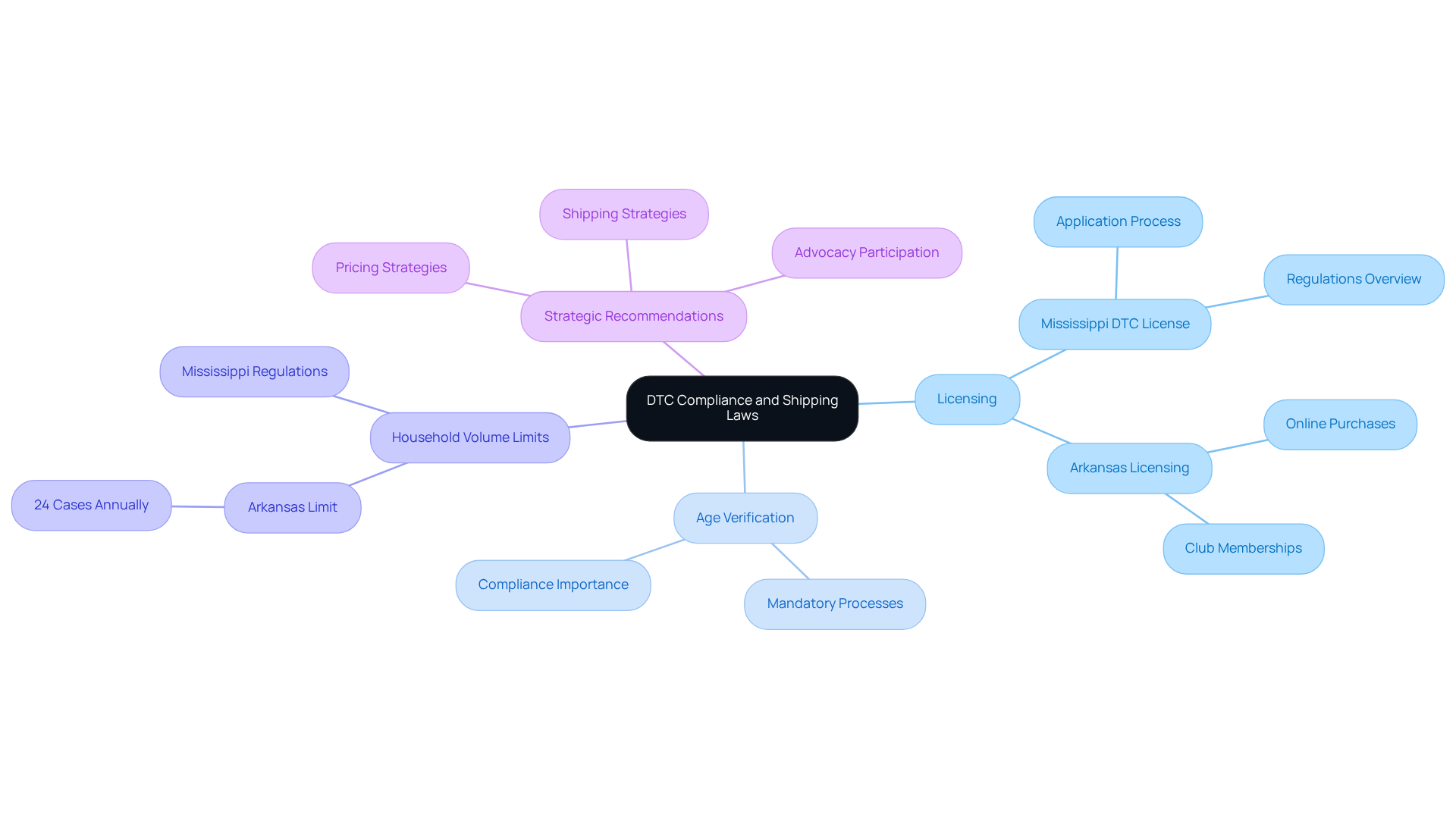
Optimize Wine Club Memberships: Enhance Customer Retention in DTC Sales
Enhancing club memberships requires a strategic focus on crafting personalized experiences that resonate with individual members. Wineries can significantly boost retention rates in their direct to consumer wine offerings by providing exclusive benefits, such as early access to limited-edition beverages and members-only events.
- Personalized communications—targeted emails that address members by name and reflect their purchase history—foster a deeper connection, making members feel valued.
- Engaging events, including virtual tastings and educational sessions with guest speakers, not only enrich the member experience but also cultivate a sense of community among wine enthusiasts.
Industry leaders assert that satisfied members are more inclined to refer friends and family, thereby organically expanding the club's membership base. Furthermore, providing high-quality content—such as blogs featuring tasting notes and behind-the-scenes stories—can significantly enhance member engagement and satisfaction.
Wineries implementing these strategies often observe , as members who feel recognized and appreciated are more likely to renew their memberships and participate in events.
By prioritizing member satisfaction and continuously adapting to their preferences, wineries can drive loyalty and repeat sales through their direct to consumer wine offerings, ensuring long-term success in a competitive market.
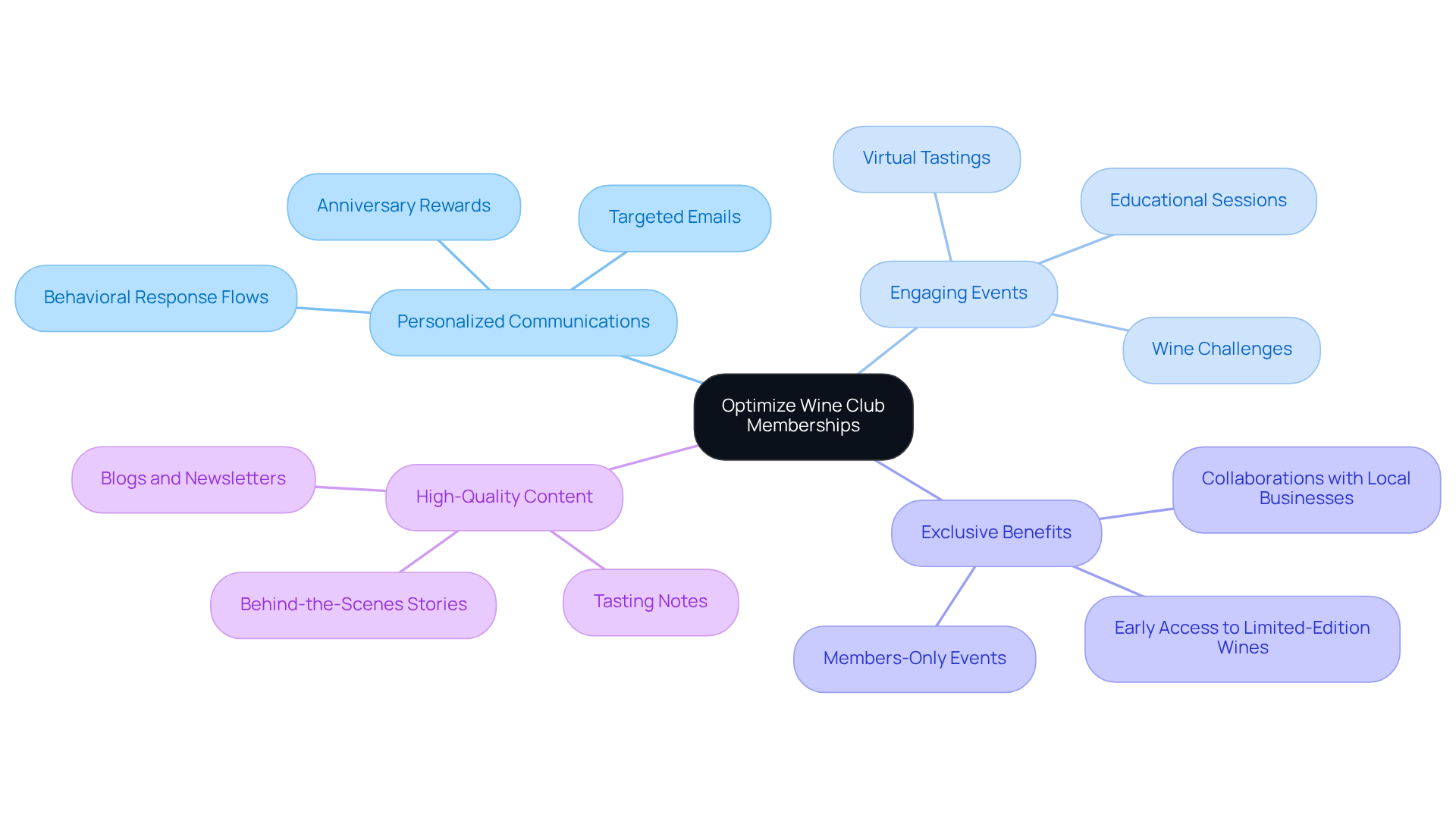
Conclusion
In the competitive landscape of direct-to-consumer (DTC) wine sales, implementing effective strategies is crucial for vineyards to thrive. The insights provided in this article underscore the significance of tailored advisory services, innovative e-commerce solutions, and robust compliance frameworks. By leveraging these elements, wineries can enhance their connections with consumers, optimize their marketing efforts, and ultimately drive sales growth.
Key strategies discussed include:
- The utilization of platforms like Shopify for seamless online shopping experiences
- The importance of compliance in logistics to navigate evolving regulations
- The role of market insights in adapting to consumer preferences
Furthermore, engaging younger audiences through creative marketing and optimizing wine club memberships are essential for fostering customer loyalty and retention. Each of these strategies highlights the necessity for a comprehensive approach to DTC sales that is responsive to market trends and consumer behavior.
As the wine industry continues to evolve, embracing these strategies will be vital for producers looking to secure their place in the market. By focusing on building direct relationships with customers, leveraging technology, and understanding compliance requirements, vineyards can position themselves for sustainable growth. The call to action is clear: adopt these innovative practices to not only boost DTC sales but also cultivate lasting connections with consumers in an ever-changing marketplace.
Frequently Asked Questions
What services does Enocap provide to enhance DTC sales for vineyards?
Enocap offers specialized advisory services that include developing robust sales channels, optimizing wine club memberships, and implementing effective demand generation techniques to unlock direct-to-consumer (DTC) revenue.
How does Enocap support family-owned vineyards?
Enocap empowers family-owned vineyards by leveraging data-driven insights to build meaningful connections with consumers, promoting sustainable growth in a competitive landscape.
Why are DTC strategies important for smaller and mid-sized vineyards?
DTC strategies are vital for smaller and mid-sized vineyards as they heavily rely on DTC sales as a critical revenue source, helping them expand their e-commerce reach and overcome market complexities.
What role does Shopify play in enhancing DTC sales for vineyards?
Shopify provides e-commerce solutions that enable vineyards to create a seamless online shopping experience, utilizing customizable templates and integrated payment options to boost their online presence and drive sales.
How can Enocap's strategic capital advisory services benefit vineyards?
Enocap's advisory services encompass tailored debt, equity, and acquisition solutions that help vineyards unlock substantial growth opportunities and transform casual buyers into loyal club members.
What logistics and compliance challenges do vineyards face in DTC sales?
Vineyards face challenges related to compliance with state and federal regulations, as well as logistics issues like timely delivery and maintaining wine quality during transit.
How does Sovos assist vineyards with compliance and logistics?
Sovos helps vineyards navigate compliance and logistics by ensuring adherence to regulations, streamlining shipping processes, and mitigating risks that could lead to costly penalties.
What trends are influencing the DTC wine market?
There is a notable shift towards e-commerce, with vineyards increasingly embracing online sales models, which require robust logistics strategies for temperature-controlled transportation and secure storage.
What technologies are being integrated into logistics operations for DTC wine sales?
Advanced technologies such as IoT-enabled tracking systems are being integrated into logistics operations to enhance efficiency and transparency throughout the supply chain.
How does effective logistics impact the profitability of wine producers?
Efficient logistics are essential for sustaining profitability by meeting consumer expectations for timely delivery, especially as the average price per bottle shipped increases.




